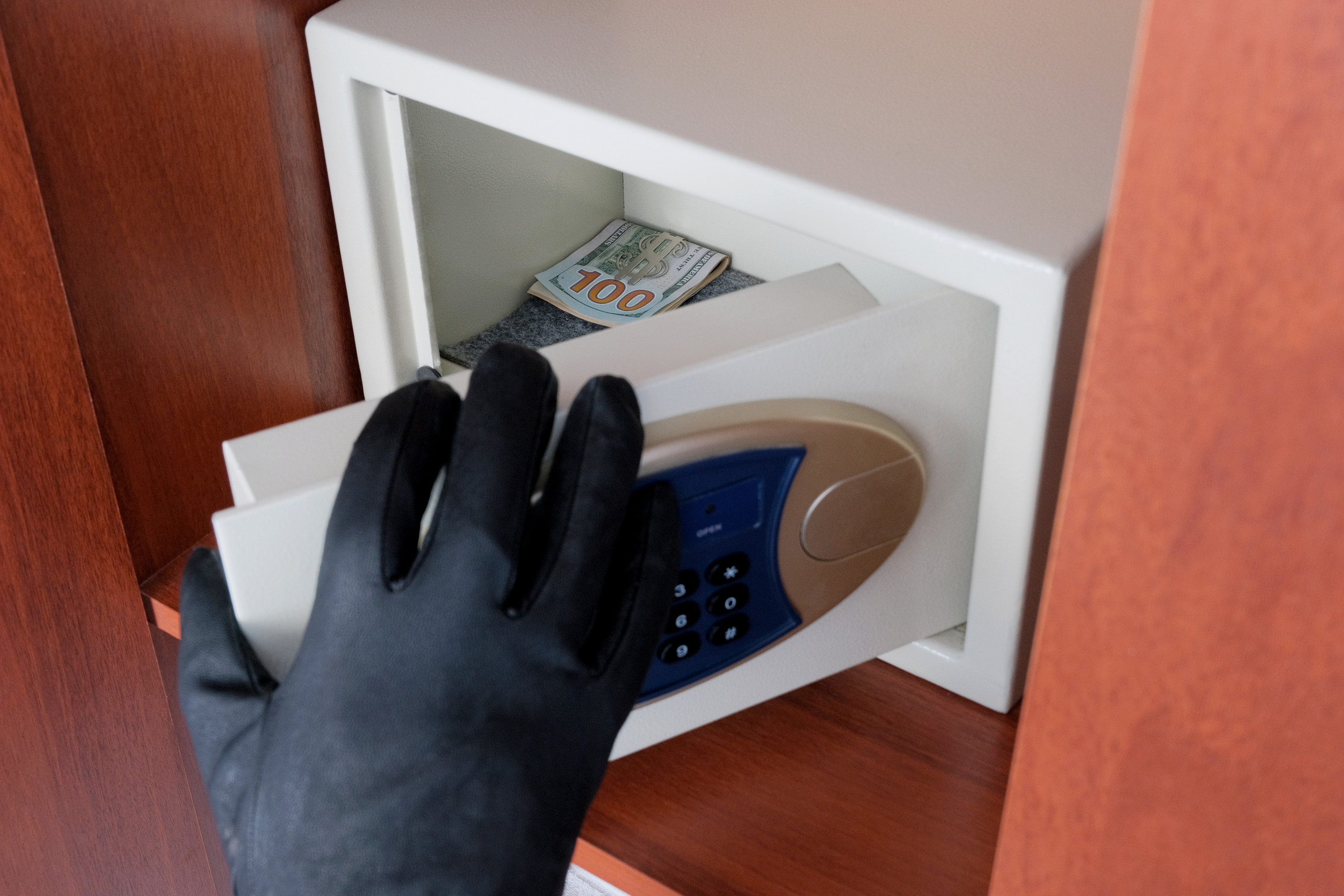There’s a certain comfort in thinking a hiding spot is “secret.” Maybe it’s a hollowed-out book or a tucked-away sock drawer—but as clever as it may seem, odds are it’s not as private as it feels. The truth is, most people rely on the same predictable hiding places when stashing away valuables. And while these might fool a casual stranger or a first-time visitor, family members are another story entirely. They’ve seen it all, lived in the same space, and probably helped clean it more times than they can count.
It’s not that family members are snooping with malicious intent—more often, it’s innocent curiosity, shared space, or simply familiarity that reveals what’s meant to be hidden. But whether it’s a wad of emergency cash, a cherished keepsake, or a personal letter, some so-called “safe” spots aren’t as foolproof as many would like to believe.
1. Inside the Sock Drawer
At first glance, the sock drawer seems like an obvious place no one would bother searching through. But it’s also one of the most overused hiding spots in any home, making it one of the first places family members check when they need to “borrow” something—or when they’re just cleaning.
The logic of hiding something under a few balled-up socks doesn’t hold up when someone knows exactly how often (or rarely) you wear your socks. It’s easy for a nosy sibling or observant parent to feel something odd beneath the layers of cotton. As soon as they feel a harder object that doesn’t belong, the secret is out.
2. Behind Books on a Shelf
Bookshelves have long been romanticized as mysterious hiding grounds, with hollowed-out novels and tucked-away treasures. But anyone who lives in the same house knows whether that row of dusty books has been touched in years or if something new has suddenly appeared. Family members who dust or rearrange furniture regularly are bound to notice when something seems off.
The moment a book is slightly out of place or the titles look oddly curated, it draws attention. Even a well-disguised safe can be betrayed by something as small as a disturbed dust pattern.
3. In the Freezer
Cold storage is surprisingly common for hiding valuables like cash or jewelry—after all, who would rummage through a bag of frozen peas? The problem is, family freezers are high-traffic zones, especially in households with multiple people and shared grocery duties. A curious sibling or hungry teenager may come across a suspicious container and open it out of sheer boredom or hunger.
Some people even store sentimental items in the freezer, believing that cold temperatures help preserve them, which makes it an even likelier place to be explored. Over time, even the most obscure plastic container starts to feel out of place when everyone’s reaching into the same space daily.
4. Under the Mattress
This old-school hiding spot is perhaps the most cliché on the list—and also the least effective in a family household. Whether it’s a parent flipping the mattress to rotate it or a sibling stealing change for snacks, someone has probably looked there before. People tend to underestimate just how often their beds get disturbed. Loose items, envelopes, or pouches placed beneath the mattress often shift, making their presence obvious when someone sits or lies down. The smallest bump or bulge can give away what was supposed to be a concealed stash.
5. In a Shoe Box in the Closet
Closets are havens of forgotten items, and shoe boxes are seemingly perfect for tucking away valuables. Unfortunately, this tactic is so well-known that it’s practically a stereotype in movies and TV shows. Family members organizing the closet, looking for storage space, or even borrowing shoes are likely to come across it. Once they see a box that’s clearly heavier than it should be—or find one tucked unusually far back—their curiosity is piqued. Even more telling is a box labeled for one thing but containing something entirely unrelated.
6. Inside a Personal Bathroom Cabinet
Toiletry drawers and bathroom cabinets are another popular hiding place due to the assumption of privacy. But in family households, bathrooms are communal zones—especially in homes with limited space. If someone’s out of toothpaste or lotion, they’re likely to rummage through any available cabinet. It only takes one moment of inconvenience for a family member to stumble upon a hidden envelope, tin, or container. Despite being tucked away under layers of shampoo or wrapped in tissue, anything that doesn’t match the bathroom context stands out quickly.
7. Behind a Picture Frame
Hiding something behind a framed photo or wall art may sound clever—after all, it feels hidden in plain sight. But picture frames shift over time, and most family members have seen these frames up close during cleaning, redecorating, or even just general curiosity. If a frame suddenly hangs at a different angle or is slightly bulkier than others, it draws attention. Kids, especially, love to poke around, and even a well-concealed back pocket in a frame can be easily discovered. What seems discreet on the surface becomes obvious the moment someone moves the frame for any reason.
8. Inside Luggage or Suitcases
Most people only use their luggage a few times a year, making it seem like the ideal long-term hiding spot. However, family members often borrow suitcases or storage bags when planning their own trips or even for makeshift storage solutions. It doesn’t take much for someone to unzip a bag and find an unexpected bundle of bills or personal documents. If the suitcase looks particularly well-kept or placed too prominently in the closet, it’s an invitation to explore. The moment someone says, “I need a bag,” that hiding place is no longer secure.
9. Underneath the Bed
Under-bed storage can feel secure—low visibility, hard to reach, and usually cluttered enough to distract from anything hidden. Still, this area is frequently accessed for seasonal items, cleaning, or even just lost socks.
Once someone starts shifting boxes or peeking around the edges, it’s only a matter of time before a hidden item surfaces. Kids crawling on the floor or pets sniffing around can accidentally reveal the stash. Even if something’s carefully wrapped or boxed, it doesn’t stand a chance against a determined or curious family member.
10. In a Kitchen Cabinet
The kitchen is the heart of the home, and that makes it one of the worst places to hide valuables in shared living environments. Cabinets get opened multiple times a day, whether it’s for a quick snack, cleaning supplies, or replacing light bulbs. If an item doesn’t belong—like a padded envelope in the baking drawer—it sticks out like a sore thumb.
Even back corners and higher shelves are prone to inspection by someone searching for something they can’t find elsewhere. No matter how obscure the cabinet, eventually someone will notice something that just doesn’t fit.
Do You Really Want To Keep Your Valuables Safe?
It’s tempting to believe that valuables are safest when hidden in familiar surroundings, but familiarity often works against that very instinct. Family members, whether out of need, curiosity, or routine, tend to explore more of the home than people realize. That makes most traditional hiding spots incredibly easy to crack. The best approach is either a truly creative, unpredictable location—or better yet, investing in a proper lockbox or home safe.
Have any of your “genius” hiding spots ever been discovered by a family member? Share your stories or thoughts in the comments—someone else might be making the same mistake.
Read More
Should Couples Have Mandatory “Money Talks” Every Month?
10 Reasons Your Money Trauma Making You Afraid of Success?


